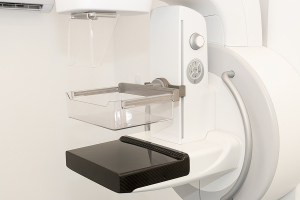by
John R. Fischer, Senior Reporter | December 20, 2022

Only 14% of cancers are detected with screening tests in the U.S. due to low recommended adherence to get screened.
Due to low adherence rates, screening tests detect only 14% of cancers in the U.S.. The majority are identified when symptoms occur or when patients seek other forms of care, such as imaging, for unrelated medical reasons.
The United States Preventive Services Task Force recommends screening for breast, cervical, colorectal and lung cancer, which together make up 29% of all U.S. cancer cases. But low adherence results in these cancers make up 15% of all diagnoses in patients who do not get screened, say researchers from NORC at the University of Chicago. A fifth test for prostate cancer is not broadly recommended due to overdiagnosis.
There are no screening tests for 57% of all diagnosed cancers, which typically are found in patients who are symptomatic, an indication that the cancer may be in advanced stages when it is more difficult to treat. These diagnoses account for 70% of cancer-related deaths.



Ad Statistics
Times Displayed: 174446
Times Visited: 3180 For those who need to move fast and expand clinical capabilities -- and would love new equipment -- the uCT 550 Advance offers a new fully configured 80-slice CT in up to 2 weeks with routine maintenance and parts and Software Upgrades for Life™ included.
“There need to be more screening options to catch more cancers and improve outcomes for patients,” said Caroline Pearson, senior vice president at NORC at the University of Chicago, in a statement.
Using data from 2017, the authors estimated the overall percentage of cancers detected by screening (PCDS), focusing on breast, lung, cervical, colorectal, and prostate.
Mammography detected a majority of breast cancers, at 61%, compared to 3% of lung cancers found with screening. This is due to variations in incidence and screening rates, with breast cancer screening ranging from 43.6% to 56.9%.
Cervical cancer has a low incidence rate, but 52% of all cases were detected with a PAP test. For colorectal cancers, screening diagnosed 45%. And for prostate, the authors estimated that 77% were detected with a PSA test, taking into account high screening rates and some overdiagnosis.
Pearson and her colleagues used data from the National Cancer Institute on the incidence of diagnosed cancers; national screening rates from the National Health Interview Survey; testing rates from the U.S. Centers for Disease Control and Prevention’s Behavioral Risk Factor Surveillance System; and several studies on the rate at which cancers are detected.
She
told CNN that the pandemic contributed to screening declines and that the PCDS rate may be even lower. She also said more data on screening and how cancers are diagnosed, as well as more tests, are essential for shaping policies around diagnosis and treatment.
“We would benefit from much more robust data and analysis to really understand how cancer is affecting different populations and how we can improve equity,” she said.
The study has not been published in a peer-reviewed journal.

